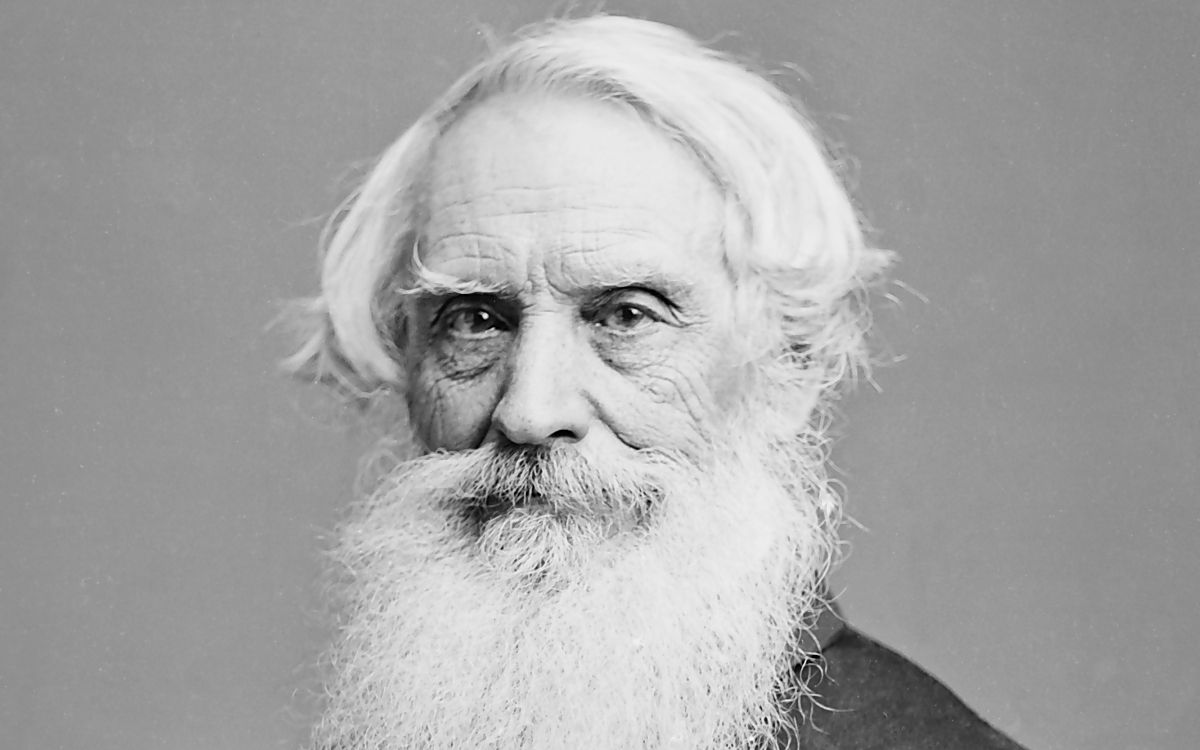America has suffered through centuries of bigotry and these characters, in particular, were not on the side of Irish immigrants.
Stroll through Central Park and you’ll eventually stumble upon Inventor's Gate at Fifth Avenue and 72nd Street.
There stands a statue of Samuel Morse. One of the famed inventor’s hands is on a telegraph, while the other holds a scroll bearing his famous code.
Little known fact: Morse ran for mayor of New York City in the 1830s.
An even more little-known fact: He ran as a candidate for the Nativist Party, and spouted some of the vilest, paranoid and hateful anti-Irish, anti-Catholic views.
Should this statue remain standing in Central Park?
This question has a new relevance since last week, when the mayor of Louisville, Kentucky, announced that a statue of 19th-century newspaper editor George Dennison Prentice, which had been erected outside the city’s main public library, would be taken down.
At the height of mid-century Irish immigration, Prentice whipped up public fear of immigrants. Leading up to Election Day, 1855, Prentice warned that the “most pestilent influence of the foreign swarms” were ruining America, and urged people to go to the polls and vote for anti-immigrant candidates.
Read more: Statue of anti-Irish newspaper editor removed from US city

Samuel Morse. Image: Public Domin/WikiCommons.
Many took this as a provocation to violence. Over 20 people were ultimately killed in the so-called “Bloody Monday” riots. Immigrant homes were set aflame and entire neighborhoods ransacked.
And so, the debate rages on. Whether it’s a statue of Columbus (killer of indigenous peoples), or Jefferson (owned slaves, slept with slaves), or even St. Patrick (kind of a religious imperialist, no?), we are still figuring out what to do about those who did some very good things in the past at the same time as they said and did some very bad things.
There’s plenty for both liberals and conservatives to learn from this debate. Conservatives like to whine that this all about the “PC police,” but they would be wise to spend time thinking about the language paranoid nativists used in the past, and how similar it is to their own unfounded fears.
“You could pull out ‘Catholic’ in the 1850s language and substitute ‘Muslim’ or ‘Mexican’ and it would sound similar to what we’re hearing today,” A. Glenn Crothers, an associate professor of history at the University of Louisville, was quoted as saying, regarding the Prentice statute.
Read more: Shock as anti-Irish immigrant graffiti sprayed on Irish store in Kansas City

The George Dennison Prentice statue in Louisville before it was taken down.
But liberals overuse their own apocalyptic language, believing bigotry was invented a few decades ago, forgetting that America has not only survived waves of immigration, but also waves of nativism.
Liberals also should not forget that exposing skeletons in historical closets may feel good when the people involved are obvious villains. But inevitably some progressive heroes will also be exposed.
It’s not hard to be a feminist when the likes of Donald Trump are supposedly mistreating women. But what about when it’s Bill Clinton?
That being said, here are just a few statues, monuments and other honors we may want to think about.
John Jay: There is a statue of the famed Founding Father on Manhattan’s West Side, which is fitting because that’s where a college is also named for the fellow who once wrote that America needed to “build a wall of brass around the country for the exclusion of Catholics.”

A Thomas Nast anti-Irish cartoon.
Thomas Nast: The famed cartoonist’s former home in Morristown, New Jersey, is recognized by the federal government as a National Historic Landmark. Nast was proudly anti-Irish, anti-Catholic and anti-immigrant, as was reflected in dozens of his illustrations.
James Harper: The founder of publishing giant HarperCollins published endless books and articles (Harper’s magazine is still around) denigrating Irish immigrants and Catholics, and even became mayor of New York as a proud, nativist Know Nothing. Harper Avenue in the Bronx is named in his honor.
Hugo Black: One of dozens of congressmen, judges and senators -- Black is widely memorialized in his native Alabama -- who joined the Ku Klux Klan in the 1920s, when the ferocity of its hatred of African Americans was matched only by its hatred immigrants, Catholics and Jews.
What are your thoughts? Let us know in the comments section, below.




Comments